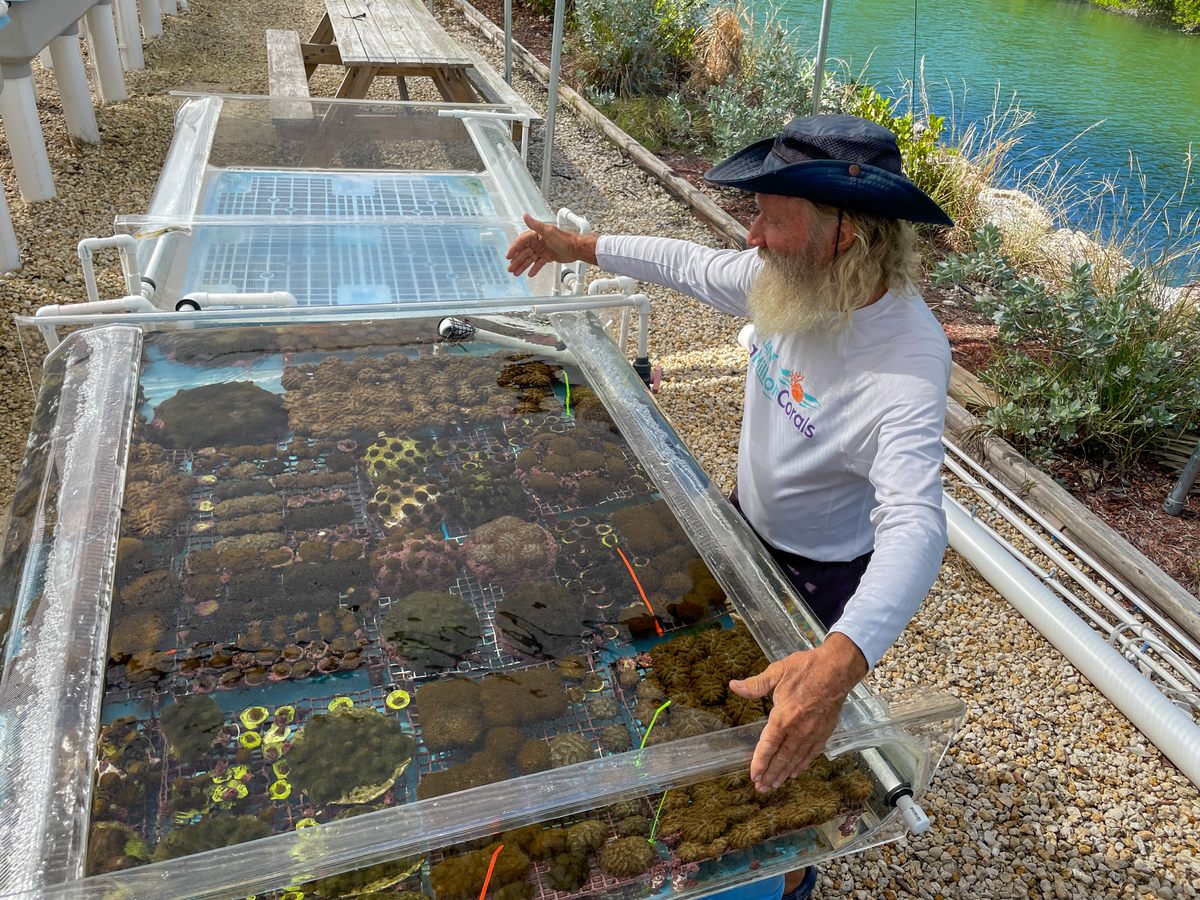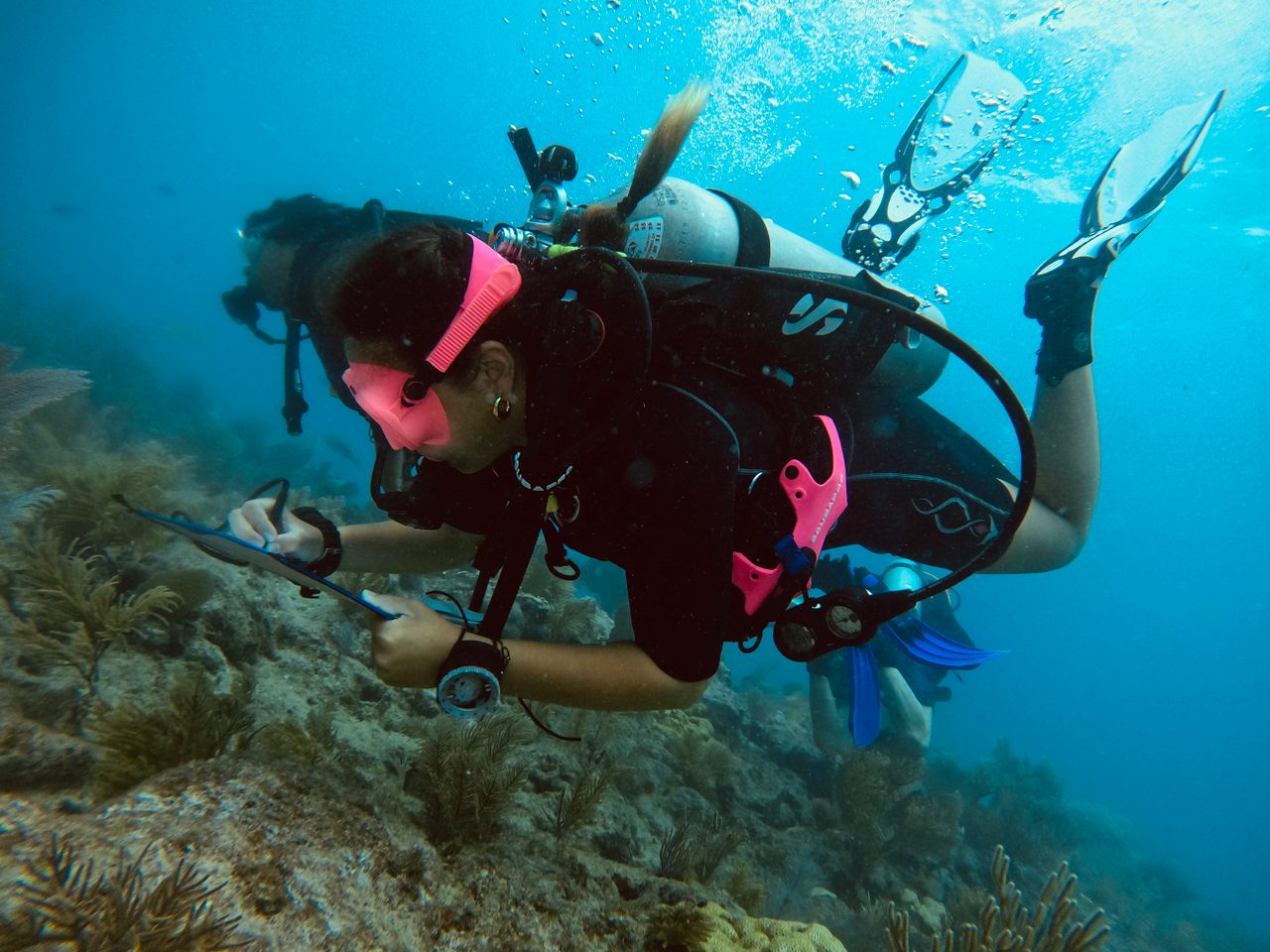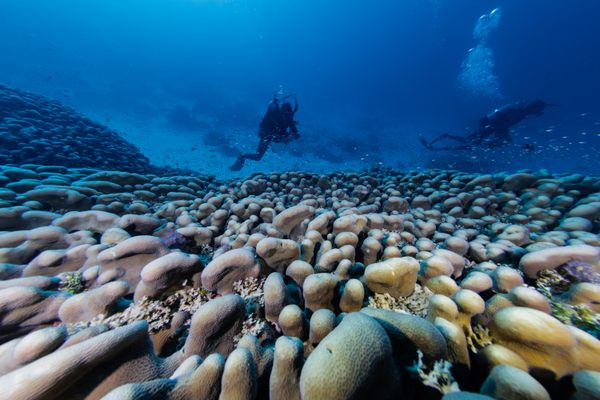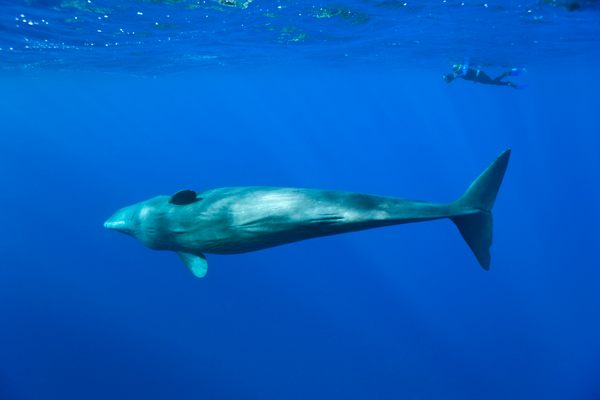These Summer Campers Are Saving Oceans One Coral Polyp at a Time
In the Florida Keys, young people are helping to rebuild the world’s third largest barrier reef.
The morning was already hot and humid as the divers jumped off the boat and descended into blue-green waters off the Florida Keys. With them, they carried dozens of living coral polyps, each tiny animal about to find a permanent home on the reef.
About 25 feet down, they reached a section of the world’s third largest barrier reef, which stretched out like a rocky moonscape, mostly gray and barren. A few sea fans waved gently with the current, but there were not many fish—the result of half a century of declining reef health.
The teenage divers paired off and made their way to bare patches of rock. Using wire brushes, they scrubbed off a shallow coating of algae and then carefully attached the finger coral to the reef using a marine epoxy that resembled Play-Doh. The goal was to plant clusters of fingers, which would, with luck, fuse together over months and years to create large colonies, eventually improving reef health and biodiversity.

From the moment the teens started scrubbing, small fish arrived to eat the algae released into the water. Those fish will likely stick around, finding a new home in the coral where they’re protected from predators, says Kramer Wimberley, founder of the nonprofit Collective Approach to Restoring Our Ecosystem (CARES).
“It’s almost as if you can see and hear them saying thank you for this,” he says.
Each July, Wimberley teaches a dozen or more youth about coral reef ecology in the Florida Keys, leading them on underwater expeditions to survey reef health and outplant, or transplant, corals. The species the divers outplanted during the excursion was endangered Acropora Cervicornis, commonly known as staghorn coral, because its fingers branch out, resembling antlers. The group also plants elkhorn coral, another branching species, as well as great star and knobby brain corals, which grow in rounded shapes.

Wimberley started CARES doing reef health surveys with adult volunteers but eventually shifted his focus to younger participants, whom he often found were more optimistic. “Kids believe they are going to be the ones to fix what it is that we’ve done and make a difference,” Wimberley says. “So they are enthused, energized, and ready to take on the world.”
CARES works in cooperation with the coral restoration program at Mote Marine Laboratory as well as other regional marine conservation organizations, and also leads a youth camp in Honduras. One of Wimberley’s students, Anumi Sassaroli, first participated in 2019 when she was 16. For her, some of the greatest rewards have been discovering the invertebrates hidden in the nooks and crannies of the reef and identifying coral species.
“One of my most fascinating revelations was that corals are living animals,” she says. “Even more astonishing is the fact that coral reefs, which comprise only one percent of the ocean, support a quarter of all marine life.”
The CARES program is particularly important to Sassaroli because she comes from a community in Costa Rica, where livelihoods depend heavily on the ocean’s fish. She hopes to use what she learns through the program to educate fishermen in her hometown about the intricacies of the reef ecosystem, and the realities of declining fish populations, a topic rife with misinformation.
“[There’s an] urgent need for education and awareness regarding marine conservation,” she says.
Just a few miles down the road on Summerland Key, about 20 miles from Key West, the Boy Scouts of America’s Sea Base camp has also been diving into coral conservation. Under large mesh canopies at the Brinton Environmental Center, scouts propagate, or grow, various coral species in tanks. What started in 2019 with just a few hundred coral polyps has now burgeoned to more than 16,000 animals, enough for outplanting hundreds of acres.

The person who encouraged the scouts to set up a coral nursery was David Vaughan, a jovial biologist with a bushy gray beard who has devoted his life to understanding corals. Vaughan founded the nonprofit Plant a Million Corals after becoming frustrated with the slow pace of conservation. He has also poured countless hours into helping the scouts set up their tanks, teaching them how to grow them, and infusing them with a sense of coral awe.
One of the corals the scouts outplant is Porites asteroides, or mustard hill coral. It’s Vaughan’s favorite coral because it grows fast and is resistant to most diseases. It also does well colonizing a new area, making it a good choice for outplanting to reestablish a reef.
Blobby and yellow, it’s not as eye-catching as the graceful staghorns. But at night it comes alive, with outstretched tentacles that capture its tiny zooplankton prey.

As Vaughan puts it: “Coral are cool organisms.”
The scouts agree, and his enthusiasm for coral has been contagious. Directly following Vaughan’s talks to scouts and adult leaders at Sea Base, he says, “I usually can’t get away from their hundred questions. It’s inspiring.”
At a time when coral bleaching events and dead and dying reefs dominate headlines, the unusual summer camp activities at Sea Base and CARES offer both a potential solution and something perhaps even more valuable at the moment: hope.














Follow us on Twitter to get the latest on the world's hidden wonders.
Like us on Facebook to get the latest on the world's hidden wonders.
Follow us on Twitter Like us on Facebook